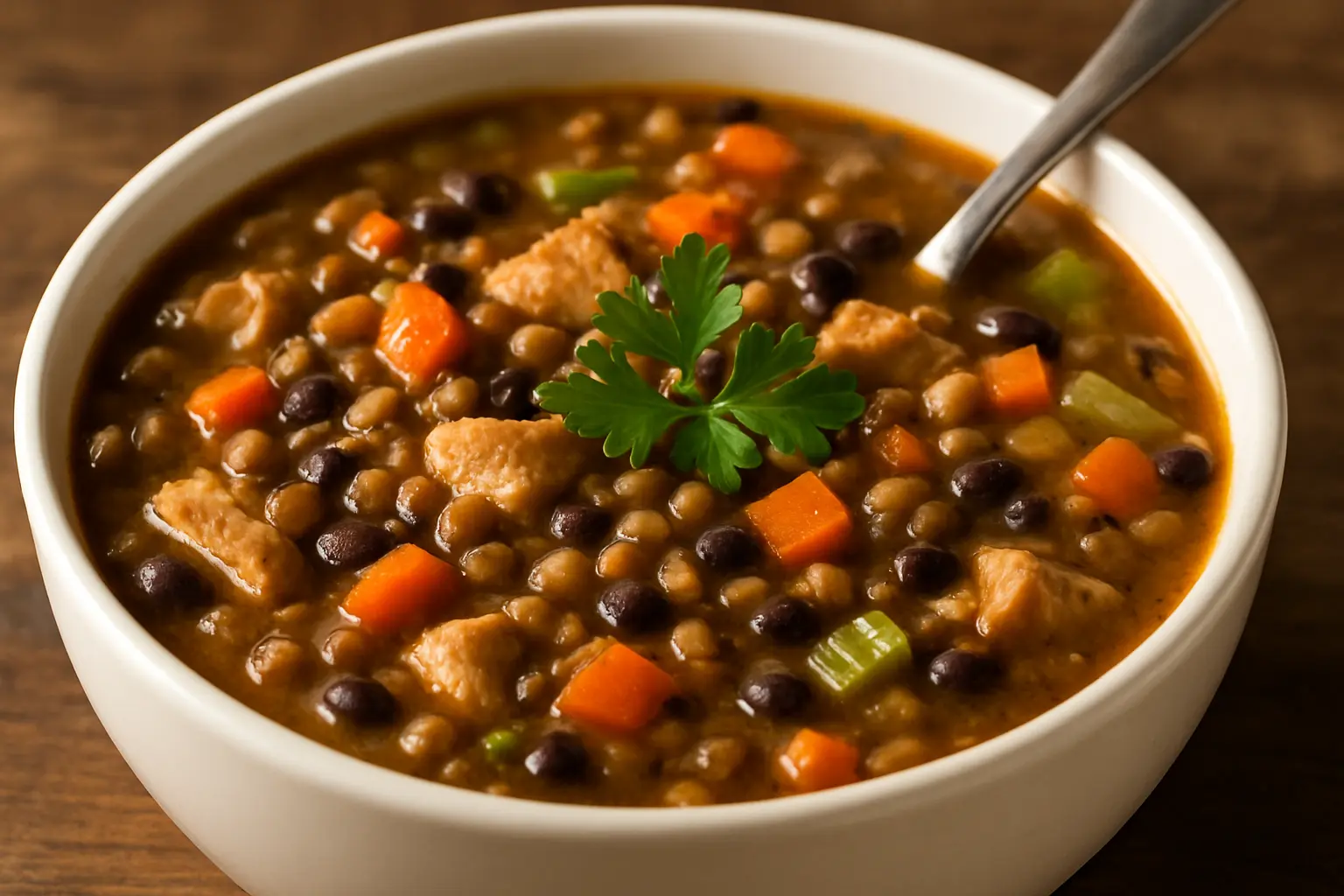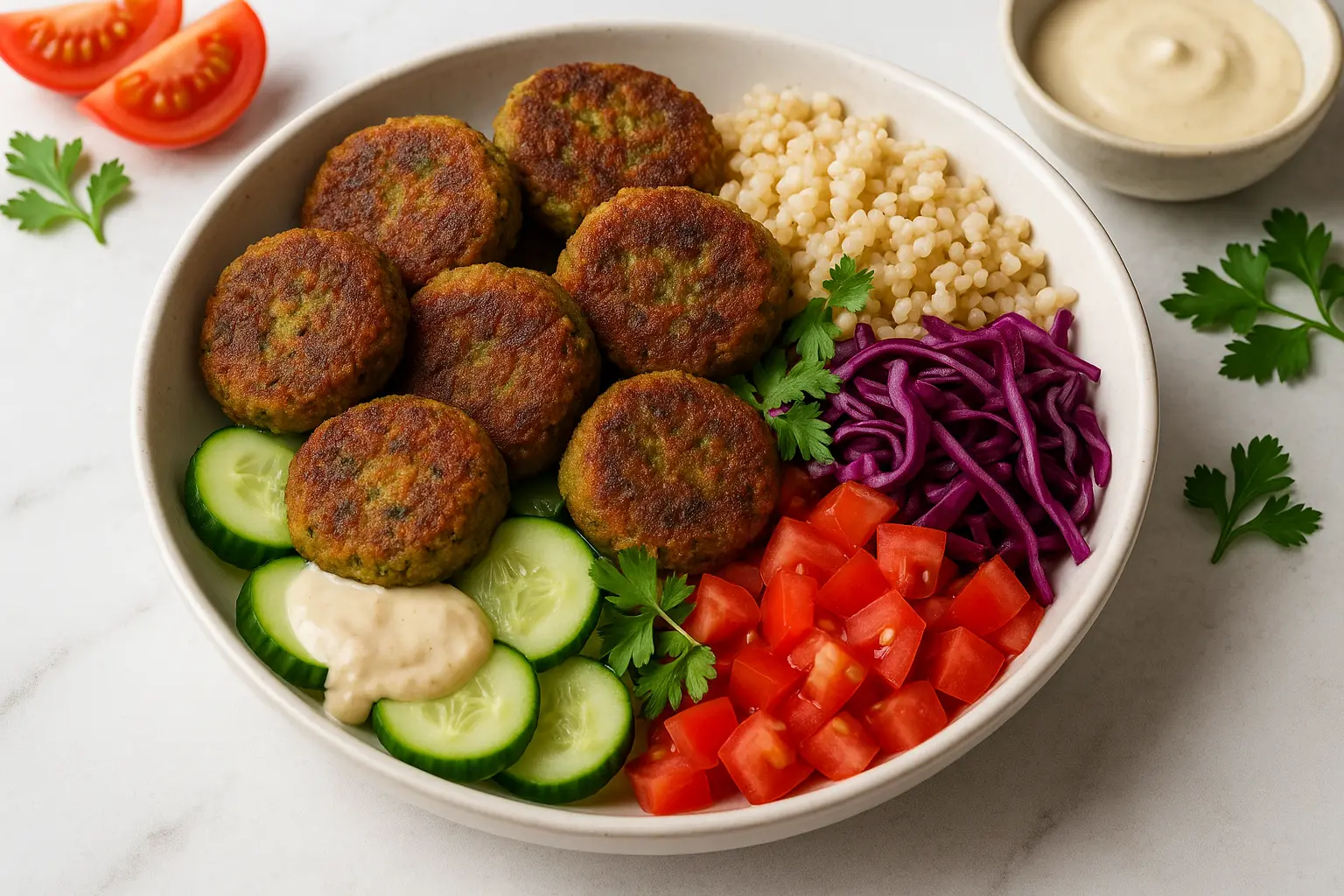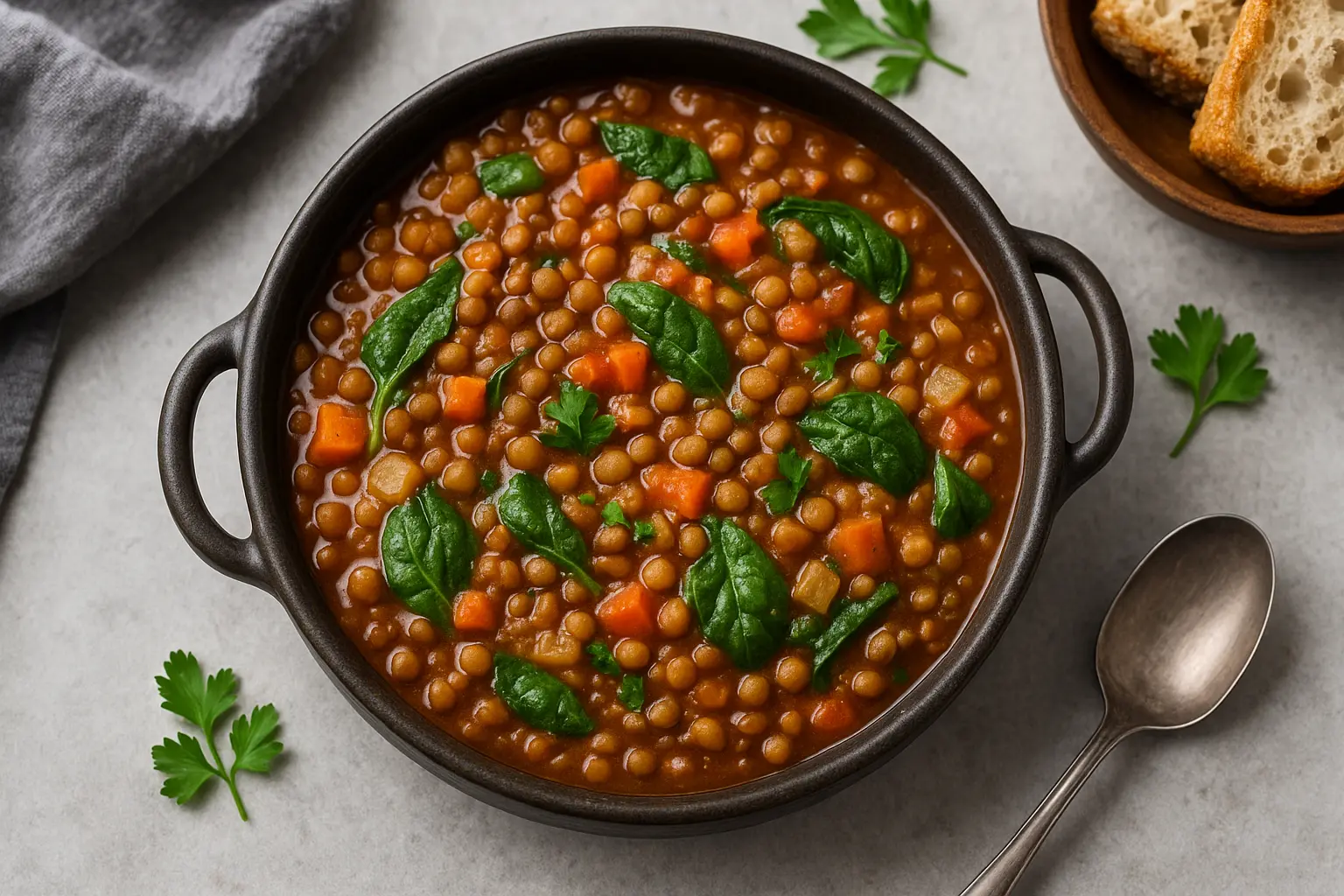When the chill sets in and hearty comfort food feels essential, soups naturally take center stage. But not all soups are equal—some are light and brothy, while others are loaded with nutrient-dense ingredients that make them filling, nourishing, and satisfying. If you’re looking for protein-packed soups that keep you full for hours, you’re in the right place.
This guide dives deep into why protein is essential, which ingredients can boost your soup’s nutritional power, and a variety of delicious high-protein soup recipes you can enjoy all year round—especially in the colder months. Whether you’re vegetarian, vegan, or a meat lover, there’s something here for you.

Why Protein Matters in Soups
Protein isn’t just about building muscle—it’s also the nutrient that keeps you feeling full and satisfied. Unlike quick-digesting carbs, protein slows digestion and balances blood sugar levels. When you combine protein with fiber-rich vegetables and wholesome carbs, your soup becomes a complete, balanced meal.
Benefits of Protein-Rich Soups:
Satiety & Weight Management – High-protein meals reduce cravings and prevent overeating.
Muscle Maintenance – Helps preserve lean muscle, especially during winter when activity might be lower.
Balanced Energy – Prevents the “soup but still hungry after” feeling.
Immune Support – Many protein sources, from chicken to lentils, provide zinc, iron, and B-vitamins critical for immunity.
Best Protein Sources for Soups
The beauty of soup is its versatility. You can use a variety of protein-rich ingredients to fit your lifestyle and preferences.
Animal-Based Proteins:
Chicken & Turkey – Lean, versatile, and mild in flavor.
Beef & Lamb – Perfect for hearty stews and slow-cooked soups.
Seafood – Salmon, prawns, and cod provide lean protein plus omega-3s.
Eggs – Poached or whisked into brothy soups like egg drop.
Plant-Based Proteins:
Lentils – Affordable, fiber-rich, and cook quickly.
Beans & Chickpeas – White beans, black beans, kidney beans, and chickpeas bulk up soups beautifully.
Tofu & Tempeh – Great for Asian-inspired soups.
Quinoa – A complete plant protein that doubles as a grain.
Peas & Edamame – Mild in flavor but rich in protein.
Cooking Methods for Protein Soups
Different cooking methods bring out unique textures and flavors:
Slow Cooker / Crockpot – Ideal for rich, meaty stews and bean soups.
Instant Pot / Pressure Cooker – Cuts down cooking time while keeping proteins tender.
Stovetop – Perfect for quick weeknight meals like lentil or chicken soup.
Blender Soups – Smooth, creamy high-protein soups with beans or tofu blended in.
Protein-Packed Soup Recipes
Below, you’ll find a wide range of soups—some traditional, some modern twists—that deliver high protein with comforting flavors.
1. Classic Chicken and Lentil Soup
Protein Sources: Chicken breast, red lentils
Why It Works: Double the protein—lean meat + plant-based lentils.
Flavor Notes: Earthy, slightly tangy, with carrots, celery, and cumin.
Best For: Cold winter nights when you want a hearty but wholesome meal.
2. Beef and Barley Stew
Protein Sources: Lean beef cubes
Why It Works: Slow cooking tenderizes beef and extracts deep flavors.
Flavor Notes: Rich, savory, slightly nutty from barley.
Best For: A filling dinner that feels indulgent but balanced.
3. Spicy Black Bean Soup
Protein Sources: Black beans
Why It Works: Vegan, fiber-rich, and protein-dense.
Flavor Notes: Smoky with cumin, paprika, and a hint of chili.
Best For: Meal prep—tastes even better the next day.
4. Creamy White Bean and Kale Soup
Protein Sources: Cannellini beans
Why It Works: Creamy texture without cream.
Flavor Notes: Mild beans with slightly bitter kale and garlic.
Best For: Healthy, light lunch that still keeps you full.
5. Salmon Chowder (Lightened-Up)
Protein Sources: Salmon fillets
Why It Works: Omega-3 fatty acids plus high protein.
Flavor Notes: Creamy but fresh, with dill and potatoes.
Best For: Cozy dinners with a nutrient boost.
6. Vegan Lentil and Quinoa Soup
Protein Sources: Lentils + quinoa
Why It Works: A powerhouse of complete plant protein.
Flavor Notes: Earthy with turmeric, cumin, and lemon.
Best For: Plant-based eaters seeking filling meals.
7. Egg Drop Soup with Tofu
Protein Sources: Eggs + tofu
Why It Works: Combines lightness of eggs with the density of tofu.
Flavor Notes: Silky texture, soy-based broth, ginger.
Best For: Quick weeknight dinner or when you’re under the weather.
8. Spiced Chickpea and Tomato Soup
Protein Sources: Chickpeas
Why It Works: Mediterranean-inspired, thick, and flavorful.
Flavor Notes: Tomato-rich with cumin, smoked paprika, and parsley.
Best For: Budget-friendly meal prep.
9. Creamy Broccoli and Cheddar Soup (Protein Boosted)
Protein Sources: Cheese + added protein powder (unflavored whey/pea protein)
Why It Works: Turns a comfort classic into a protein-packed dish.
Flavor Notes: Rich, cheesy, with freshness from broccoli.
Best For: Winter comfort that feels indulgent but balanced.
10. Asian-Inspired Miso Soup with Edamame
Protein Sources: Edamame, tofu
Why It Works: Light yet protein-rich with soy-based ingredients.
Flavor Notes: Savory umami, green onions, seaweed.
Best For: A warming but light starter or lunch.
Tips to Maximize Protein in Soups
Add Beans or Lentils to Any Soup – Even chicken noodle can benefit from added beans.
Stir in Tofu or Tempeh – Works well in brothy soups and curries.
Use Bone Broth Instead of Regular Broth – Adds collagen and extra protein.
Top with Seeds or Nuts – Sunflower seeds, almonds, or pumpkin seeds add crunch and protein.
Boost with Protein Powder – Unflavored whey or pea protein can blend into creamy soups.
Meal Prep & Storage
Batch Cooking: Make big portions and store in the fridge for 4–5 days.
Freezing: Most soups freeze well (except dairy-heavy ones). Use airtight containers.
Reheating: Add fresh herbs, lemon juice, or spices to revive flavors.
Seasonal Variations
Winter: Beef stew, lentil curry soups, salmon chowder.
Spring: Light miso soup, broccoli-cheddar with fresh greens.
Summer: Cold gazpacho with protein add-ins like beans.
Autumn: Pumpkin and lentil soup with warming spices.
Final Thoughts
Protein-packed soups are the ultimate combination of comfort and nourishment. They fit into every lifestyle—from meat-lovers to vegans—and can be adapted to the season, cooking method, or budget. Whether you’re looking for muscle recovery meals, family-friendly dinners, or winter warmers, soups with protein give you everything: taste, satiety, and health benefits.
So the next time you crave a bowl of something warm, skip the plain broth and aim for a protein-rich, hearty soup that will keep you satisfied for hours.
Leave a comment
Your email address will not be published. Required fields are marked *




















